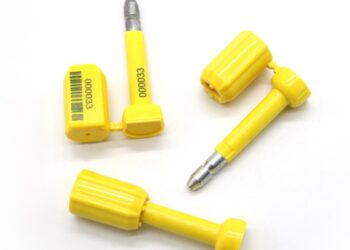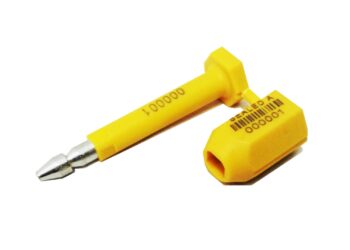ISO 17712 compliant seals are an integral component of security measures used in various industries to safeguard goods during transportation and storage. These seals play a crucial role in preventing unauthorized access, tampering, and theft of valuable goods. One common question that arises in relation to these seals is whether they can be reused or if they are designed for one-time use only. To address this query, it is essential to understand the purpose, design, and standards associated with ISO 17712 compliant seals.
1. Purpose and Importance:
ISO 17712 compliant seals are designed to enhance the security of shipping containers, trucks, railcars, and other modes of transportation. Their primary purpose is to provide evidence of tampering or unauthorized access. This is particularly important in international trade and logistics, where goods may pass through multiple checkpoints and jurisdictions. The use of these seals helps prevent theft, smuggling, and contamination of goods, thus ensuring the integrity of the supply chain.
2. Design and Characteristics:
ISO 17712 compliant seals come in various forms, including bolt seals, cable seals, and plastic seals. Their design and construction adhere to the specifications outlined in the ISO 17712 standard, which sets forth requirements for seal strength, tamper resistance, and durability. These seals are designed to resist tampering attempts, making it challenging for unauthorized individuals to remove or replace them without leaving visible evidence of interference. This design ensures that the seals are effective in fulfilling their security role.
3. Reusability vs. One-Time Use:
The question of whether ISO 17712 compliant seals can be reused or are meant for one-time use is contingent upon several factors, including the type of seal and the level of security required.
- Bolt Seals: Bolt seals are commonly used in shipping containers and are generally considered one-time use devices. Once a bolt seal is affixed and secured, it is broken upon removal, rendering it unusable for subsequent applications. Reusing bolt seals compromises their effectiveness and could compromise the security of the cargo.
- Cable Seals: Cable seals, which are versatile and can be used in various applications, are also often intended for one-time use. Similar to bolt seals, cable seals are designed to be broken upon removal. Reusing them could compromise their integrity and tamper-evident features.
- Plastic Seals: Plastic seals are generally more versatile and may offer some flexibility when it comes to reusability. Some plastic seals have a design that allows for easy removal without breaking, making them potentially reusable for certain applications where tamper evidence is not a primary concern.
4. Risk and Considerations:
Reusing ISO 17712 compliant seals presents several risks and considerations that must be carefully evaluated:
- Security: Reusing seals compromises their tamper-evident features and could lead to undetected tampering or unauthorized access.
- Regulatory Compliance: In industries subject to strict regulations, reusing seals might not meet compliance standards for security and accountability.
- Liability and Insurance: Reusing seals could affect insurance coverage in case of theft or tampering incidents.
5. Practical Alternatives:
While ISO 17712 compliant seals are generally designed for one-time use, industries that require some level of reusability without compromising security might consider alternative solutions. These could include electronic seals (e-seals) or tracking technologies that provide real-time monitoring of cargo integrity without the need for physical seal removal.
Conclusion:
ISO 17712 compliant seals are primarily designed with tamper-evident features, making them well-suited for one-time use in securing cargo during transportation. Reusing these seals compromises their security and effectiveness. Industries seeking reusable solutions should explore electronic tracking methods that maintain security without the limitations of physical seals. Ultimately, the choice between reusability and one-time use should be guided by the specific security requirements and regulatory considerations of the industry in question.











